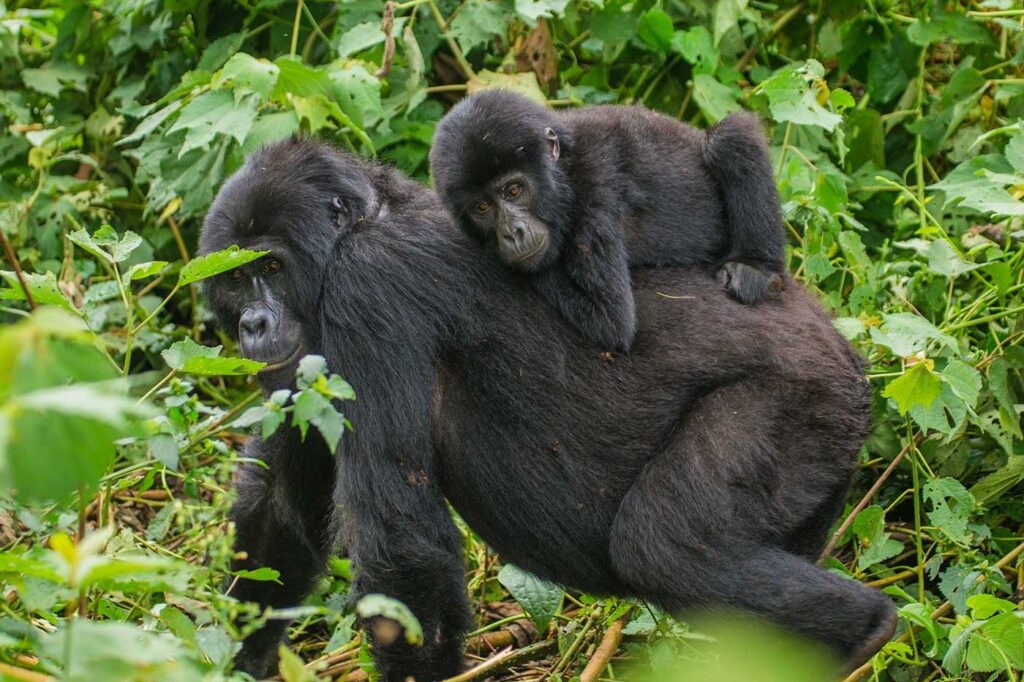Bwindi Impenetrable National Park: A Haven for Biodiversity in Uganda
Bwindi Impenetrable National Park, located in southwestern Uganda, is a UNESCO World Heritage Site renowned for its exceptional biodiversity and, most notably, its population of endangered mountain gorillas; Covering an area of approximately 331 square kilometers, the park is characterized by its dense, ancient rainforest, mist-shrouded mountains, and rich ecological tapestry. Beyond the iconic gorillas, Bwindi is home to a myriad of other wildlife species that contribute to the park’s ecological significance.
Flora:
Bwindi’s impenetrable forests are a treasure trove of botanical wonders. The park is part of the Albertine Rift, an area with a high concentration of endemic species. Towering trees, ferns, mosses, and orchids create a lush and vibrant understorey. The park’s diverse vegetation is divided into distinct zones, ranging from lowland forest to montane forest, each supporting a unique array of plant life.
Fauna:
Mountain Gorillas (Gorilla beringei beringei):
Undoubtedly the park’s main attraction, Bwindi is home to approximately half of the world’s remaining mountain gorilla population. Visitors have the rare opportunity to embark on guided treks to observe these magnificent creatures in their natural habitat.
Chimpanzees (Pan troglodytes):
Bwindi is not only a sanctuary for gorillas but also a habitat for chimpanzees. The park boasts a population of these intelligent primates, and lucky visitors may encounter them swinging through the treetops or foraging on the forest floor.
Other Primates:
Bwindi is a primate paradise, hosting several other primate species, including the L’Hoest’s monkey, red-tailed monkey, black-and-white colobus monkey, and blue monkey. These primates contribute to the park’s rich tapestry of biodiversity.
Birdlife:
With over 350 bird species recorded, Bwindi is a haven for birdwatchers. Notable avian residents include the African green broadbill, Grauer’s rush warbler, and the handsome francolin. The park’s diverse altitudinal range contributes to its remarkable bird diversity.
Mammals:
Bwindi is home to an array of mammalian species, including forest elephants, various antelope species, and small carnivores like the African civet and golden cat. The elusive forest duiker is also found in the park.
Reptiles and Amphibians:
The Park is rich in herpetofauna, with numerous species of snakes, lizards, and frogs. The presence of endemic amphibians further underscores Bwindi’s importance in the conservation of global biodiversity.
Conservation Challenges:
Despite its protected status, Bwindi faces several conservation challenges, including habitat loss due to agriculture and human settlements, poaching, and disease transmission from humans to gorillas. Conservation efforts, including community engagement, anti-poaching measures, and sustainable tourism practices, are crucial for the park’s long-term preservation.
Remarks – Biodiversity of Bwindi Impenetrable National Park
Bwindi Impenetrable National Park stands as a testament to the importance of preserving our planet’s biodiversity. Beyond its iconic mountain gorillas, the park shelters a diverse array of flora and fauna, contributing to its status as a biodiversity hotspot; As we continue to strive for conservation, responsible tourism and community involvement remain pivotal in ensuring the survival of Bwindi’s magnificent wildlife for generations to come.








